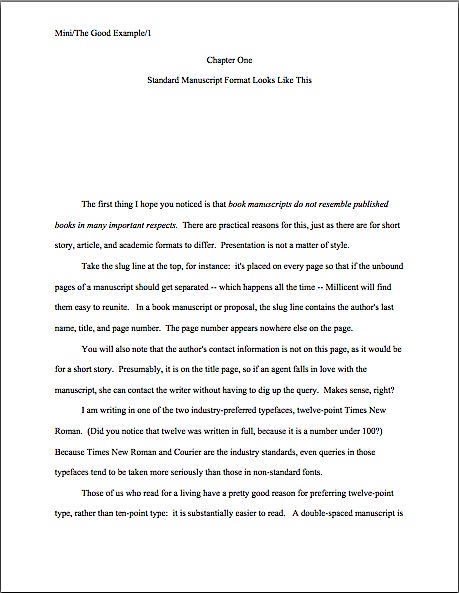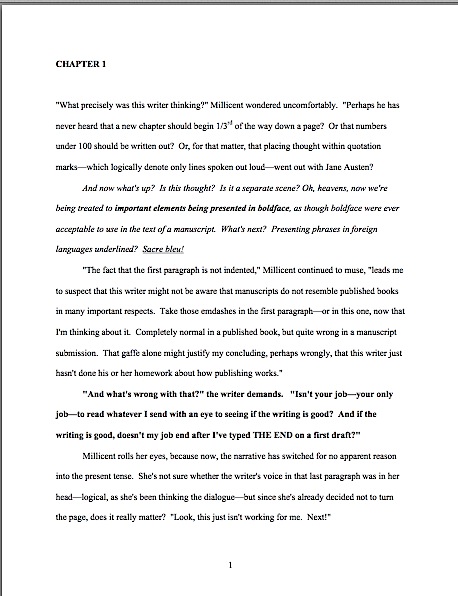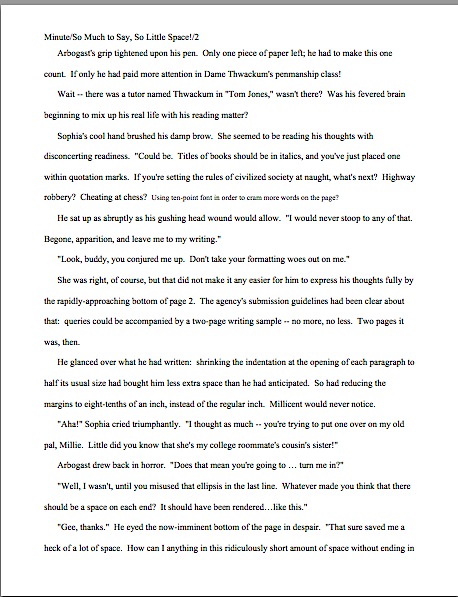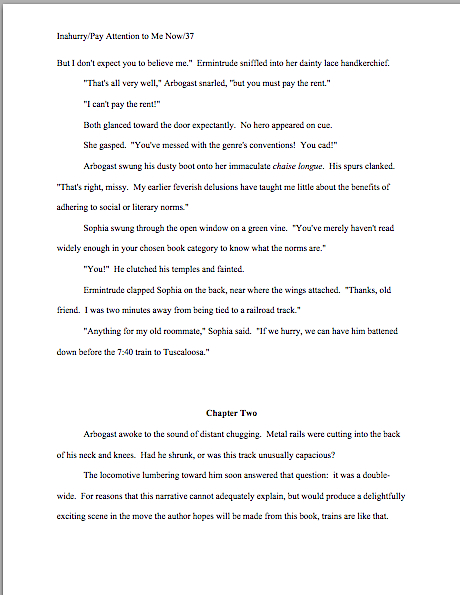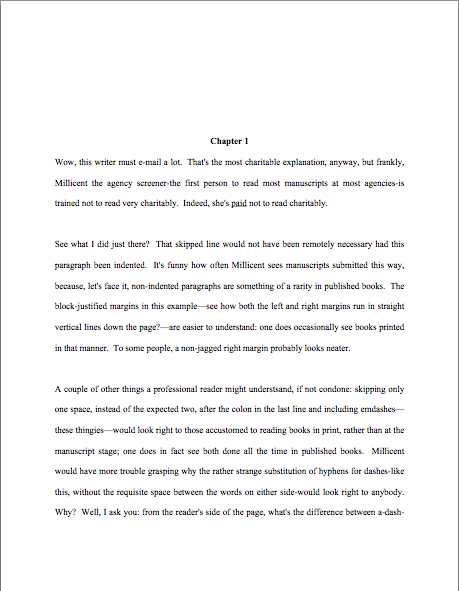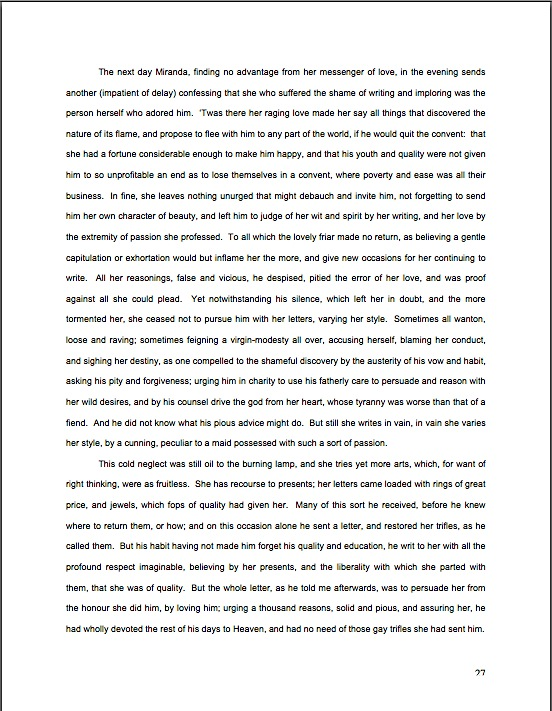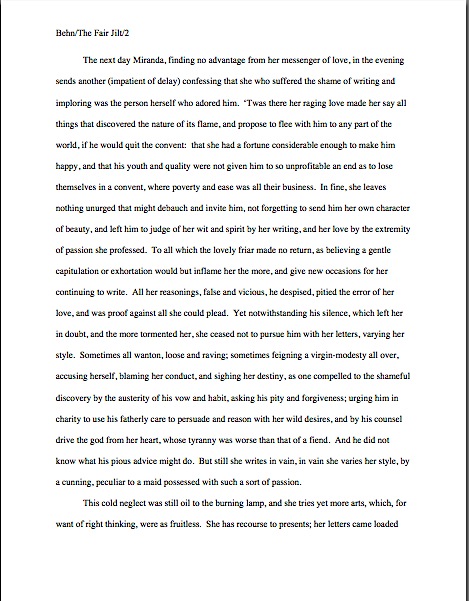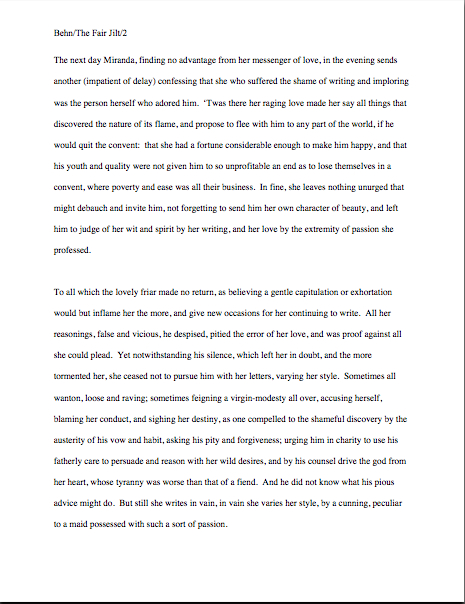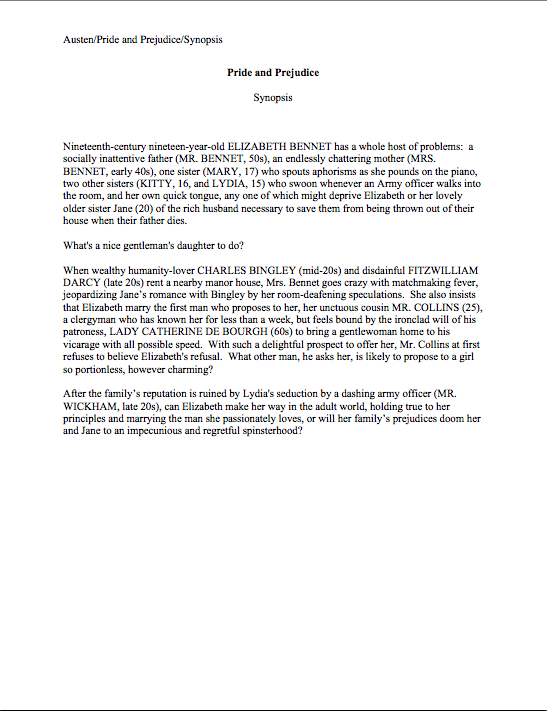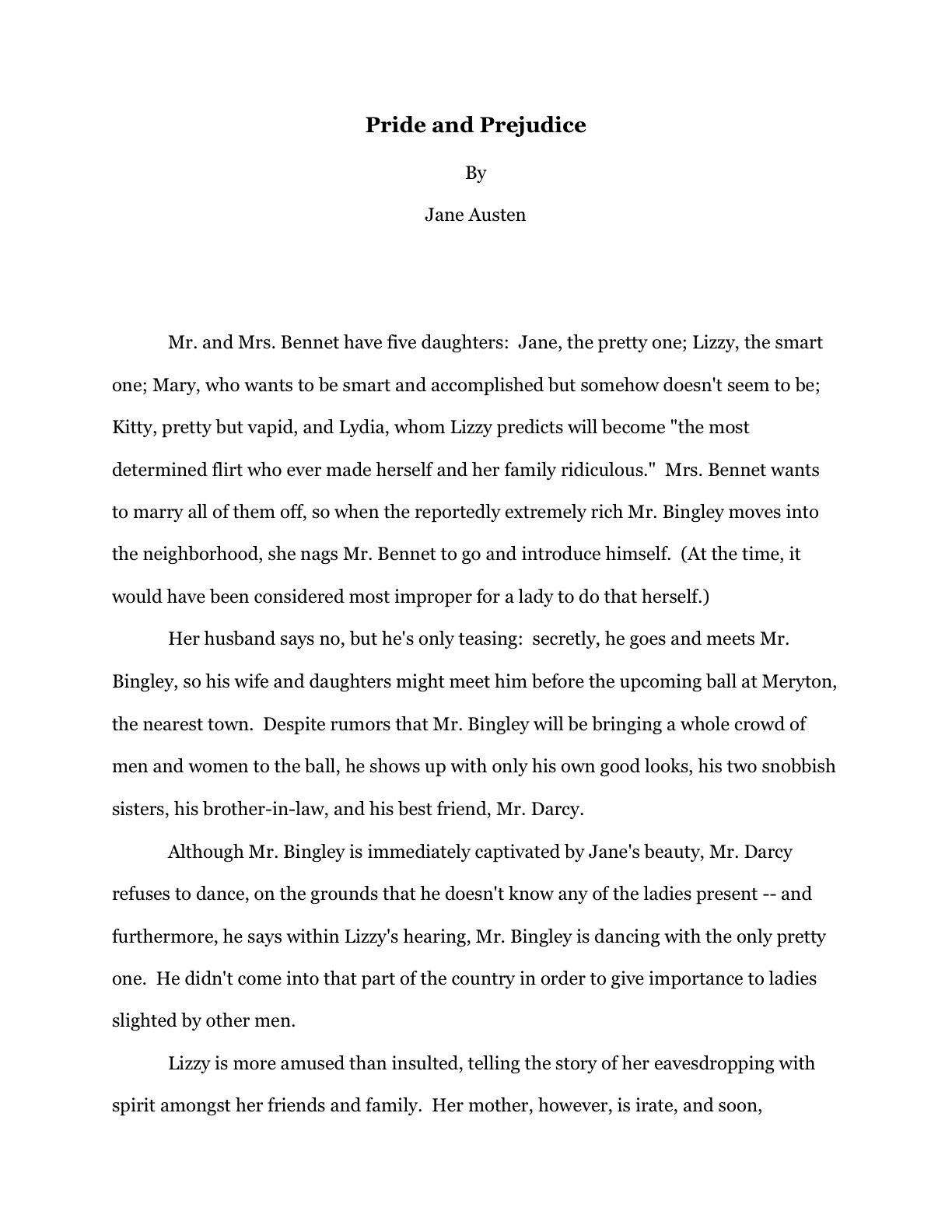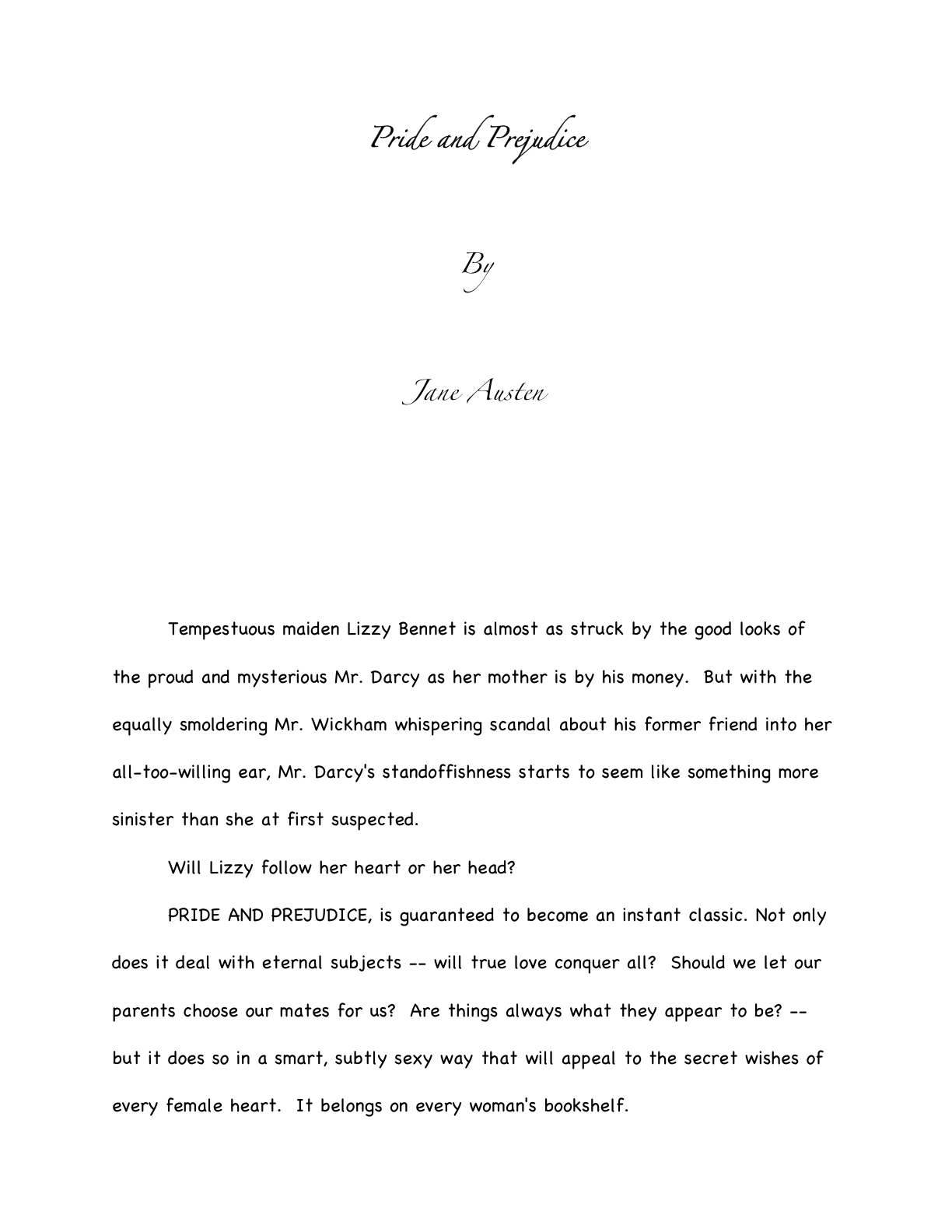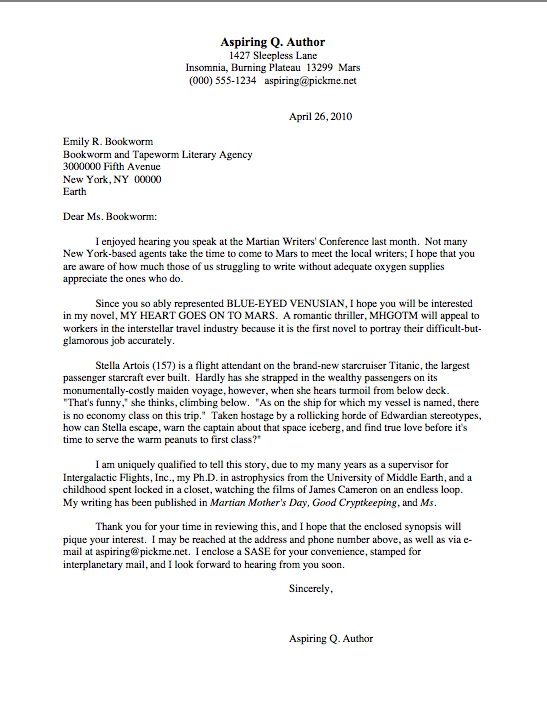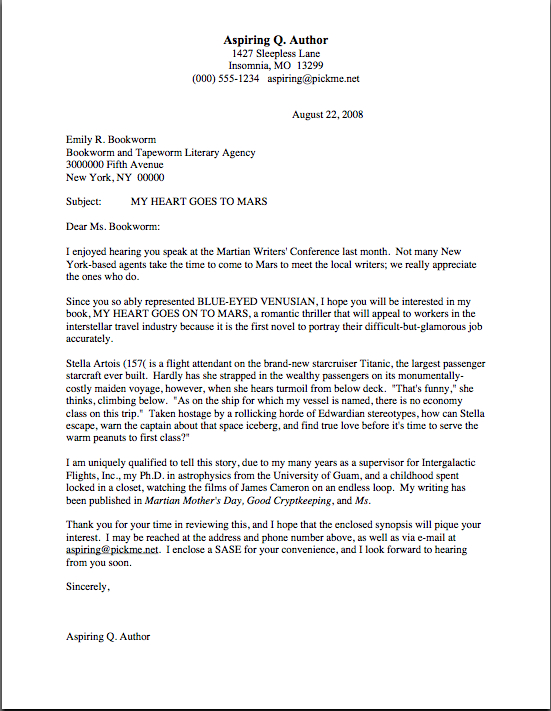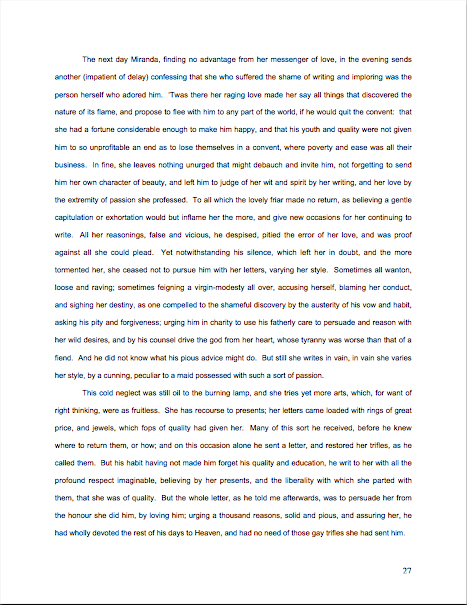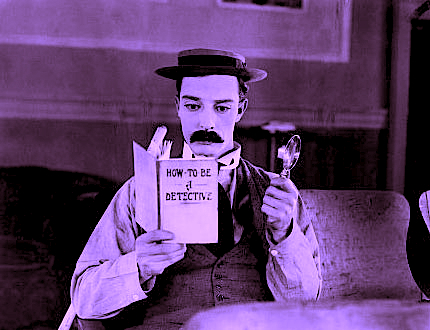
The wee tourist trap where I took this is stuffed to the gills with practical people, evidently. If you look closely in the background, you’ll see that there’s also a liquor-and-sundries store. In retrospect, I wish I’d documented what the locals considered sundry, as opposed to requisite.
Beginning to sense a theme here? Excellent. Today, I would like us to focus our collective minds firmly on the practical while we continue our chat about how to present a book manuscript in a professional manner.
I would hate, after all, for any of you lovely people to fall into the oh-so-common pre-submission trap of believing that because implementing one or more of these rules will take some time (and thus slow the egress of your manuscript from your writing digs), any of them may be treated as optional. Oh, our old pal Millicent the agency screener isn’t going to burst into your studio, wrest the keyboard from your trembling hands, and forcibly insert indentation into your paragraphs. She’s not going to take a ruler to your margins, either, in all probability, or call you on the phone to yell at you because Chapter 2 began on the same page as the end of Chapter 1, any more than she’s likely to tell everyone in the literary world that for some reason best known to yourself, you’ve evidently decided that Microsoft’s defaults have come to dictate formatting in the entirely unrelated publishing industry.
She simply doesn’t have the time to do any of that. She’s got hundreds of submissions to read.
That doesn’t mean, however, that a screener or contest judge might not get the urge to indulge in a little educational mayhem. Like anyone else in a position to read an average day’s complement of submissions, our Millicent sees an incredible amount of good writing presented as though presentation couldn’t possibly matter.
As I’m hoping today’s grim opening image will remind you, that’s just not true. Inevitably, the cosmetic aspects of a submission affect how someone who works with professionally-formatted manuscripts will respond to what’s on the page.
Don’t believe me? Perhaps you missed our recent brief visual tour of a properly-formatted manuscript. If so, slip your tootsies into Millicent’s moccasins and compare what you would have expected a page 1 to look like:
With the following page 1, riddled with fairly common deviations from standard format. If you’re having trouble seeing the details, try holding down the COMMAND key and pressing + to enlarge the image.
Visibly different from across the room, isn’t it? As we’ve been discussing, since U.S.-based agencies send out their clients’ manuscripts in a specific format, a submission presented in any other manner just doesn’t look right to those of us who read for a living. Once you know how a page is supposed to look, even minor deviations distract the eye.
Since that generally comes as a big, ugly surprise to writers who have never had the opportunity to see a professionally-formatted manuscript, the temptation to fudge is quite understandable. Especially in a contest entry, in order to fit desired text into a limited number of pages, something that has occurred to so many entrants for so many years that many literary contests simply disqualify any entry that doesn’t follow its formatting rules.
Sadly, the writers pulling off this sort of trick often believe they’re being subtle — or don’t know that fudging in order to include more words per page than other entrants is a knock-you-out-of-finalist-consideration offense. But how could it not be, when the results are so obviously different from a manuscript adhering to standard format? Compare this page 2:
With this:
Really no chance of Millicent’s missing the spacing tricks here, is there? See what I mean about those familiar with standard format’s enjoying a distinct advantage at submission time?
While I’m horrifying you, guess what she’s trained to do with a partial manuscript in which the writer has messed with the margins, font size, or new chapter formatting in order to have a favorite scene fall within the requested page limit? Or, even more commonly, to prevent the break at the bottom of page 50 (or whatever is the last of the requested pages) from occurring in mid-scene, if not mid-sentence?
Uh-huh: “Next!”
Don’t see why? Well, in the first place, it never fails to astonish, amuse, and/or perplex those of us who read for a living that any aspiring writer, no matter how inexperienced, would presume that an agent or editor would ask for a set number of pages, expecting a scene, section, chapter, or even sentence to end precisely at the bottom of it. That virtually never happens naturally.
You’d never know that, though, from how often an agency’s request for the first 50 pages yields either the type of compressed text we saw above or this type of chapter break:
I’d show you a counterexample of a chapter break correctly formatted, but you’ve already seen it, in essence: the opening of Chapter Two should begin on a fresh page — and look precisely like the first page of Chapter One.
Hard to get more practical than that, eh?
Whether you are being surprised and stunned by the rigors of standard format for the first time or working your way though this series as a veteran, it is very much to your advantage to learn these rules, then apply them consistently throughout your manuscript. While it is undoubtedly time-consuming, investing a few days in formatting your manuscript properly will in the long term save you a whole heck of a lot of time.
It’s true, honest. While the applying these rules to a manuscript already in progress may seem like a pain, practice makes habit. After a while, the impulse to conform to the rules of standard format becomes second nature for working writers. The manuscript came into the world correct — which, in turn, saves the writer revision time. On a deadline, those conserved minutes and hours can save the writer’s backside as well.
Oh, you may laugh, but the more successful you are as a writer, the more likely the day will come when you’re not going to have the half an hour it would take to reformat a inconsistent manuscript before your editor calls to demand why you didn’t e-mail those revisions yesterday. Writing a requested new chapter (yes, it happens) in standard format may make the difference between getting it under your agent’s nose before she leaves for the day/weekend/her honeymoon/to deliver that baby and missing the boat. And hands up, every contest entrant who has dashed panting into a post office 32 seconds before it closed, to get that entry postmarked on the last possible day.
Seriously, committing to formatting your pages correctly from the get-go will render you a better professional writer — and definitely a better agency client. Think about it: if you were Millicent’s boss, the agent of your dreams, would you rather be drumming your fingers on her desk for the extra hour it will take your client who prefers to write in some other format to whip the new version of Chapter 7 that editor interested in acquiring the book requested, or would you prefer to receive it as soon as the writer polishes it off?
And if you were lucky enough to be the writer in this situation — hey, acquiring editors don’t ask for changes in manuscripts they don’t like — would you be happier performing that lighthearted little revision changing the protagonist’s sister Wendy into her brother Ted if you did not also have to make the time to alter the formatting, or if you did? You’re going to have enough on your plate, rushing to work those revisions into the plot: s/he is no longer a corporate lawyer, but a longshoreman, and Uncle George dies not of a heart attack, but of 12,000 pounds of under-ripe bananas falling on him from a great height when he goes to the docks to tell Ted that Great-Aunt Mandy is now Great-Uncle Armand. (If only Ted had kept a better eye on that load-bearing winch!)
Stop looking so smug, nonfiction writers: you’re even more likely to end up wanting those saved minutes. Nonfiction contracts often specify delivering the finished manuscript rather quickly, and it’s far from unusual for the acquiring editor to ask for a different running order, or even different chapters, than a proposal laid out. Trust me, at that junctures, the last thing you’ll want to have to worry about is whether your margins are consistent.
And all of that’s the good news, what happens if everything goes right. The more successful you are as a writer — any kind of writer — the more often you will be churning out pages in a hurry. Just ask any author whose agent is breathing down her neck after a deadline has passed. Especially if the writer didn’t know about the deadline until it had already come and gone.
Oh, how I wish I were kidding about that. And don’t even get me started on the phenomenon of one’s agent calling the day after Thanksgiving to announce, “I told the editor that you could have the last third of the book completely reworked by Christmas — that’s not going to be a problem, is it?”
Think you’re going to want to be worrying about your formatting then? Believe me, you’re going to be kissing yourself in retrospect for learning how to handle the rote matters right the first time, so you can concentrate on the hard stuff. (What would many tons of bananas dropped from that height look like in transit, anyway?)
Fortunately, standard format sinks into one’s very bones with use; in practical terms, it honestly is easier than what many aspiring writers are already doing to their pages. I’m constantly encountering writers who tinker endlessly with the settings on their Word programs because they heard somewhere (in the finest tradition of rumor, they are often unsure precisely where) that the default setting for double-spacing is not the precise size agents really want, or hand-constructing quotation marks out of pixels so they will look like the ones in a favorite published book, or painstakingly typing the slug line onto the top of each and every page of a word-processed document, rather than typing the darned thing into the header once and being done with it.
All of these are bits of writerly obsession I’ve seen in person, by the way. I wasn’t kidding about these rules saving you time in the long run.
Still don’t believe that it’s worth your time to learn the rules — and to apply them consistently every single time you sit down to write any prose that might conceivably end up in a book manuscript? Okay, here’s an even stronger motivation: virtually always, an agent, editor, contest judge, or screener’s first reaction to an improperly-formatted manuscript is not to take the writing it contains very seriously.
Why should they? Obviously, this writer is still learning how to play the game; if she’s truly talented and determined, the logic runs, she’ll respond to the bone-crushing depressive effect of rejection by realizing she needs to learn the rules. In the long run, that will make her a better, more productive professional writer. And if by some mysterious chance she does not respond to being told her book isn’t agency-ready by giving up on it, or if she does not possess the psychic skills to derive you should find out what professional manuscripts look like from a form letter blandly stating, this manuscript does not meet our needs at this time, well, Millicent sees too many perfectly-formatted submissions in any given week of screening to fill her boss’ new client spots several times over.
I know: trying. Yet as I believe I may have mentioned once or twice before, I do not run the universe, and thus do not make the rules. Sorry. No matter how much I would like to absolve you from some of them, it is outside my power. Take it up with the fairy godmother who neglected to endow me with that gift at birth, okay?
Until you have successfully made your case with her, I’m going to stick to wielding the skills that she did grant me, acquired through a childhood surrounded by professional writers and editors who made me learn to format pages the right way the first time. Oh, you may chuckle, but my fifth-grade history paper was in standard format; I can still hear my mother blithely dismissing my poor, befuddled teacher’s protests that none of the other kids in the class were typing their papers with, “Well, honestly, if Annie doesn’t get into the habit of including slug lines now, where will she be in twenty years?”
Where, indeed? The strictures of standard format are hardly something that she would have wanted me to pick up on the street, after all.
So let’s start inculcating some lifetime habits, shall we? To recap the rules we’ve studied so far:
(1) All manuscripts should be printed or typed in black ink and double-spaced, with one-inch margins around all edges of the page, on 20-lb or better white paper.
(2) All manuscripts should be printed on only one side of the page and unbound in any way. For submission to US-based agencies, publishing houses, and contests, the pages in question should be US-standard 8.5″ x 11″ paper.
(3) The text should be left-justified, not block-justified. By definition, manuscripts should not resemble published books in this respect.
(4) The preferred typefaces are 12-point Times, Times New Roman, Courier, or Courier New — unless you’re writing screenplays, in which case you may only use Courier. For book manuscripts, pick one (and ONLY one) and use it consistently throughout your entire submission packet.
(5) The entire manuscript should be in the same font and size — no switching typefaces for any reason. Industry standard is 12-point.
(6) Do not use boldface anywhere in the manuscript but on the title page — and not even there, necessarily.
(7) Every page in the manuscript should be numbered — except the title page. The first page of text is page 1, not the title page.
(8) Each page of the manuscript (other than the title page) should have a standard slug line in the header. The page number should appear in the slug line, not anywhere else on the page.
(9) The first page of each chapter should begin a third of the way down the page. The chapter title should appear on the first line of the page, not on the line immediately above where the text begins.
(10) Contact information for the author belongs on the title page, not on page 1.
(11) Every submission should include a title page, even partial manuscripts.
Everyone ready to devote the rest of his or her long, productive creative life doing all of that? If not, this would be a dandy time to pipe up with questions, concerns, and fruitless protests. While you’re formulating ‘em, let’s move on.
(12) The beginning of every paragraph of text should be indented .5 inch. No exceptions, ever.
Right off the bat, here is a way to save some of you conscientious rule-followers some time. Most word-processing programs (Including Word, if left to its own devices) automatically indent .5 inch (12.7 mm, if my junior high school conversion formula is still correct), but as you’ve probably noticed in practice, that’s more than five spaces.
Such is the way of the world. If you set your tabs to .5 inch, you’ll be set.
Why is the number of spaces relevant here? Well, the usual way this rule is expressed is indent every paragraph 5 spaces, a quaint hangover from the days when typewriters reigned supreme. As you may have heard somewhere, however, MS Word, the standard word processing program of the U.S. publishing industry, automatically sets its default first tab at .5 inch. Yet unless you happen to be using an unusually large typeface like Courier, you’ve probably noticed that hitting the space bar five times will not take you to .5 inches away from the left margin; in Times New Roman, it’s more like 8 spaces.
Does this mean all of us should be whipping out our measuring tapes, painstakingly hand-crafting a specialized tab that’s the exact equivalent of five actual characters, down to the last micron? Of course not — but would you be surprised to hear how many aspiring writers do just that?
Their confusion is understandable: this is genuinely one of those things that actually has changed in theory, if not visibly on the page, since the advent of the personal computer. To set the nervous at ease, let’s take a moment to talk about why is standard indentation at .5 inch now, rather than at five characters.
History, my dears, history: back in the days when return bars roamed the earth instead of ENTER keys, there were only two typefaces commonly found on typewriters, Pica and Elite. They yielded different sizes of type (Pica roughly the equivalent of Courier, Elite more or less the size of Times New Roman), but as long as writers set a tab five spaces in, and just kept hitting the tab key, manuscripts were at least internally consistent.
With the advent of the home computer, however, word-processed manuscripts became the norm. The array of possible typefaces exploded. Rather than simply accepting that every font would yield slightly different indentation sizes, the publishing industry (and the manufacturers of Word) simply came to expect that writers everywhere would keep hitting the tab key, rather than hand-spacing five times at the beginning of each paragraph. The result: the amount of space from the left margin became standardized, so that every manuscript, regardless of font choice, would be indented the same amount.
So why pick .5 inch as the standard indentation? Well, Elite was roughly the size of Times New Roman, 12 characters per inch. Pica was about the size of Courier, 10 characters per inch. The automatic tab at .5 inch, therefore, is as close as even the most historical-minded editor could desire to five spaces from the left margin in Pica.
All of which is a long-winded way of saying that in this instance, at least, Word’s default settings are the writer’s friend. Keep on hitting that tab key.
Again, no exceptions. If I had my way, no aspiring writer would ever send so much as a Christmas card in block-style business format to anyone working in the publishing industry. It’s fine in an e-mail (and thus an e-mailed query, although not in any pages an agency’s submission guidelines might permit a querier to include in the body of the e-mail), but on the page, it just looks as though the sender is unfamiliar with how words appear in print in American English. Take a gander, if you can bear it:
Wildly different from standard format, isn’t it? And, to those who work with manuscripts and/or published books, it does not look particularly literate.
Why should a savvy writer care about that perception, so long as the writing is good? Well, although literacy has become decreasingly valued in the world at large — picture me weeping copiously — the people who have devoted themselves to bringing excellent writing to publication still tend to take it awfully darned seriously. To folks like your humble correspondent, any document with no indentations, skipping a line between paragraphs, and the whole shebang left-justified carries the stigma of (ugh) business correspondence, not high literature or even stylish letter-writing.
Think of it this way: do you really want the person you’re trying to impress with your literary genius to wonder whether you’ve ever read a published book?
I thought not. And which do you think is going to strike format-minded industry professionals as more literate, a query letter in business format or one in correspondence format (indented paragraphs, date and signature halfway across the page, no skipped line between paragraphs)?
Uh-huh. And don’t you wish that someone had told you that before you sent out your first query letter?
That clattering sound you just heard was the more nervous type of aspiring writer reaching frantically for his mouse, to open up all of his writing files and change them instantly. And frankly, he should: despite the fact that everyone from CEOs to the proverbial little old lady from Pasadena has been known to use block format from time to time (blogs are set up to use nothing else, right?), technically, non-indented paragraphs are not proper for English prose.
Period. That being the case, what do you think Millicent’s first reaction to a non-indented page 1 like our last example is likely to be? Given how many submissions she needs to get through before she can break for lunch, how tempted do you think she would be not to read it at all?
Trust me on this one: indent your paragraphs in any document that’s ever going to pass under the nose of anyone even remotely affiliated with the publishing industry. Make my fairy godmother happy.
Not a good enough reason? Okay, here’s another: adhering to rule #12 carries a fringe benefit — it renders running afoul of rule #13 much less likely, for the exceedingly simple reason that it’s not necessary to keep your paragraphs from running together. Let’s make it official:
(13) Don’t skip an extra line between paragraphs, except to indicate a section break.
That makes sense, right? Since the entire manuscript should be double-spaced with indented paragraphs, there is no need to skip a line to indicate a paragraph break. Which is, in case you were not aware of it, what a skipped line between paragraph means in a single-spaced or non-indented document.
That couldn’t possibly apply to a book manuscript, by definition. There’s a practical reason for that: it’s a comparative pain to edit a single-spaced document, either in hard copy or on a computer screen. The eye skips between lines too easily, and in hard copy, there’s nowhere to scrawl comments like Mr. Dickens, was it the best of times or was it the worst of times? It could hardly have been both!
That being the case, why do aspiring writers so often blithely send off manuscripts with skipped lines, single-spaced or otherwise? My guess would be for one of two reasons: either they think business format is proper English formatting (which it isn’t) or they’re used to seeing skipped lines in print. Magazine articles, mostly. Or blogs. (The blogging program makes me do it, Millicent, I swear.)
Just don’t do it. Reserve the skipped line for section breaks.
A few hands have been waving urgently in the air since I started this section. “But Anne!” those of you who have seen conflicting advice point out, “I’ve always heard that there are specific markers for section breaks! Shouldn’t I, you know, use them?”
You mean the * * * or # to indicate a section break, right? That’s a throwback to the age of typewriters. Their original purpose was to alert the typesetter that the missing line of text was intentional, the author honestly did mean for the chapter to end there, and the narrative ceased because the story was over, not because the writer had passed out from the effort of banging for years on a keyboard that required considerable force to operate.
These days, though, it’s customary to presume that not only will an agent or editor be swift enough on the uptake to understand that the end of the text means the end of the manuscript, but also that the end of one section and the beginning of another is comprehensible without the addition of hieroglyphics. For book manuscripts and proposals, at least; remember, the rules for short stories are different.
If you are writing a book-length work, unless you’re entering a contest that specifically calls for them, or the agency to which you’re planning to submit mentions a preference for them in its submission requirements, don’t distract Millicent by including these extras. Do check contest rules carefully, though; you’d be amazed at how seldom some long-running literary contests update their rules.
And while we’re speaking of rules that have undergone some transformation over time…
(14) Nothing in a book manuscript should be underlined. Titles of songs and publications mentioned in the text, as well as words in foreign languages and those you wish to emphasize, should be italicized. Titles of poems, however, belong within quotation marks.
That’s fairly straightforward, right? Italics are one of the few concessions manuscript format has made to the computer age — again, for practical reasons: underlining uses more ink than italics in the book production process. Thus, italics are cheaper in than underlining.
So if a character feels really strongly that “The Raven” is a much better example of Edgar Allan Poe’s sensibilities than his first published book of poetry, Tamerlane and Other Poems, all Millicent can say is, “Mon ami, I cannot say I agree. Back then, the poor man was still singing Aura Lee with the other cadets.”
In which, of course, she would not be entirely correct. Oh, the formatting’s right — Aura Lee‘s a Civil War song, and Poe left West Point long before that.
Fair warning, though: if you consult an old style manual (or a website that is relying upon an old style manual), you may be urged to underline some or all of the words and phrases mentioned above. As will anyone who learned how to format a manuscript before the home computer became common, for the exceedingly simple reason that the average typewriter doesn’t feature italic keys as well as regular type; underlining used to be the only option. Although I remain fond of typewriters — growing up in a house filled with writers, the sound used to lull me to sleep as a child — the fact is, the publishing industry now assumes that all manuscripts are produced on computers. In Word, even.
I suspect outdated manuals are not the only reason Millicent and her ilk so often receive manuscripts containing underlining, though: as I may have mentioned a few (or a few hundred) times on this site, different fields have different standards. There are some areas of writing endeavor in which underlining is still de rigueur. Unfortunately, it’s really, really common for writing guidelines from all over the place to be posted online as though they are applicable to all writing, anytime, anywhere.
If you are writing a book manuscript or proposal, the only formatting guidelines that should concern you are those specifically applicable to books. Don’t even consider importing rules from, say, short story format; your manuscript will merely come across as confused.
And no wonder, with so much misinformation about italics use floating around the web. To minimize the possibility of any member of the Author! Author! community’s falling prey to this misguided miasma, let’s swiftly review the proper use of italics in a book manuscript.
(a) For foreign-language words appearing in an English-language manuscript, unless the words in question are proper names: people, places. The logic behind this part of the rule is very straightforward: you don’t want the agent of your dreams to think you’ve made a typo, do you?
(b) To emphasize particular words or phrases, as a speaker might do out loud. Since we’ve all seen a million times in print, I shan’t belabor the logic, except to say that typewriter-bound authors used to use underlining for this. So did hand-writers.
(c) Some authors like to use italics to indicate thought, but there is no hard-and-fast rule on this. Remember, though, if thought is italicized in a text, the narrative must be consistent about it. This would be logically redundant such a manuscript:
I’m so cold, Musette thought.
Before you decide whether to italicize thought at all, it’s a good idea to check recently-published books in your chosen book category — not new releases in general, as the practice varies across genres — to see how common it is. Do be aware, too, that many agents and editors actively dislike this style choice. They feel, and with some justification, that a good writer should be able to make it clear that a character is thinking something, or indicate inflection, without resorting to funny type.
I have to confess, as a reader, I’m with them on that last one, but that’s just my personal preference. I find it distracting, especially if a narrative leans to hard upon it: many aspiring writers seem to labor under the impression that dialogue readers will want to know every single time a character applies more breath to one word than another. Like any literary trick, the more often it appears over a short run of text, the more likely the reader is to tire of it — and thus the less efficacious it is as a device.
There are, however, many agents and editors who don’t have a problem with italics at all. Which means, I’m afraid, there is no fail-safe option here. Sorry. You submit your work, you take your chances.
Whichever route you take, however, do make certain to adhere to it throughout your manuscript — you would be astounded at how many submissions will italicize words in foreign languages for ten pages, then underline them for the next sixty. Or simply don’t appear to have been subject to any overarching guidelines at all.
To a professional reader, an uneven application of the rules of standard format can be a red flag, again for practical reasons. Consistency is the hallmark of a strong authorial voice, after all, and professional writers are expected to read and re-read their own work to refine it. If a manuscript simply bellows that its writer has not only never sat down and read the current draft beginning to end — the only way to catch certain types of plot inconsistencies, by the way — it’s usually a pretty good indication that it could benefit from further revision.
And it’s not as though an agent could submit an inconsistently-formatted manuscript to an editor at a publishing house; it wouldn’t show off the writing to its best advantage. Which is, of course, true when the writer submits the manuscript to an agency or literary contest as well.
As I said, the goal here is practical: you want your writing to shine. At minimum, you’re going to want to rid your manuscript of anything that distracts from it.
Next time, we’ll polish off the rest of the rules, and perhaps talk a little about presentation finesse. Keep up the good work!
